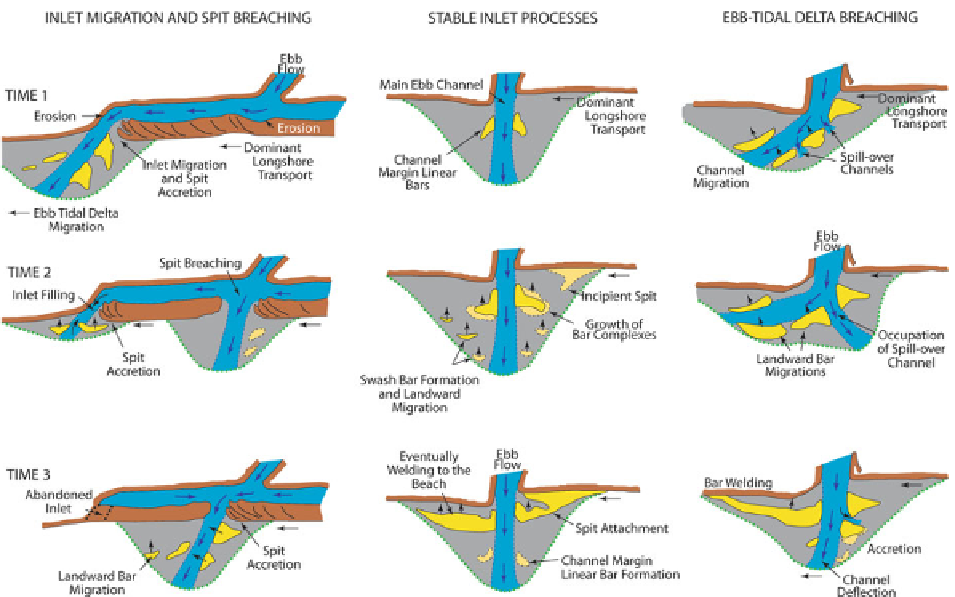Geology Reference
In-Depth Information
Fig. 12.6
Models of sand bypassing tidal inlets (From FitzGerald et al.
2001a
)
along the downdrift shoreline, the channel to the
backbarrier lengthens, retarding the exchange of
water between the ocean and backbarrier. Ultimately,
when the barrier spit is breached and a new inlet is
formed in a hydraulically more favorable position,
the tidal prism diverts to the new inlet, and the old
inlet closes. When this happens, the sand comprising
the ebb-tidal delta of the former inlet is transported
onshore by wave action, commonly taking the form
of a landward migrating bar complex. It should be
noted that when the inlet shifts to a new position
along the updrift shoreline a large quantity of sand
has effectively bypassed the inlet.
dispersed to the downdrift shoreline and transported
back toward the inlet. In some instances, a landward-
migrating bar complex forms a saltwater pond as the
tips of the arcuate bar weld to the beach stabilizing its
onshore movement. Although the general shape of the
bar and pond may be modifi ed by overwash and dune
building activity, the overall shoreline morphology is
frequently preserved. Lenticular-shaped coastal ponds
or marshy swales become diagnostic of bar migration
processes and are common features at many active and
relict inlets.
12.6
Stratigraphy and Facies
Relationships
12.5.2.4 Bar Complexes
Depending on the size of the inlet, the rate of sand
delivery to the inlet, the effects of storms, and other
factors, the entire process of bar formation, its land-
ward migration, and its attachment to the downdrift
shoreline may take from 6 to 10 years (Gaudiano and
Kana
2001
).
The volume of sand bypassed can range from
100,000 to more than 1,000,000 m
3
. The bulge in the
shoreline that is formed by the attachment of a bar
complex is gradually eroded and smoothed as sand is
Early stratigraphic models of tidal inlets and their
related tidal shoals were constructed using surface
information consisting largely of bedform and grain
size distributions, short cores and box cores, and
shallow trenches. Idealized regressive or trans-
gressive tidal inlet sequences were created using
a knowledge of inlet morphology and processes
and then by stacking characteristic facies from
the various inlet environments in accordance with

